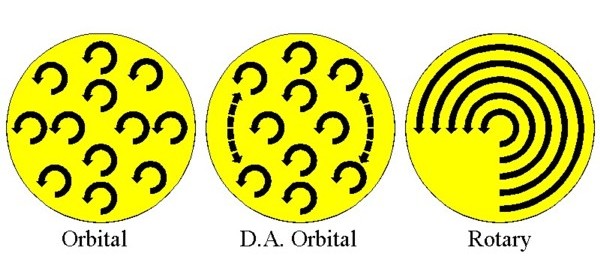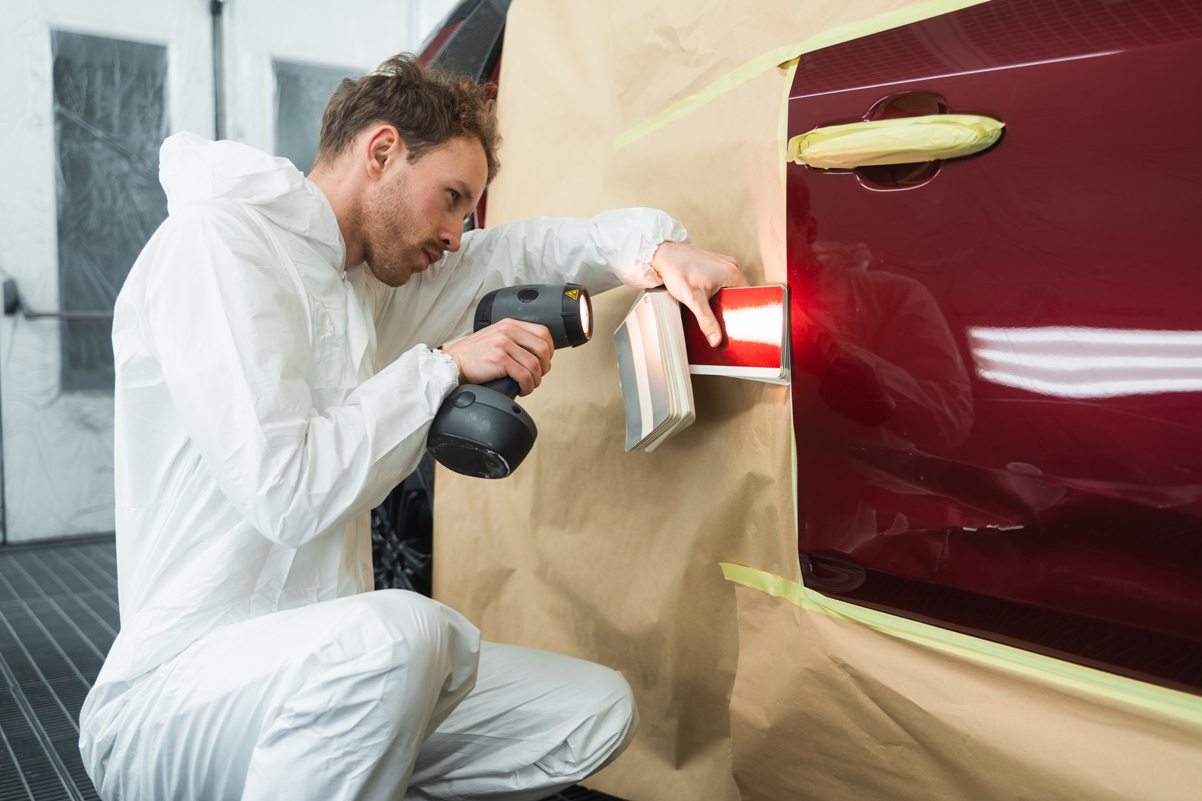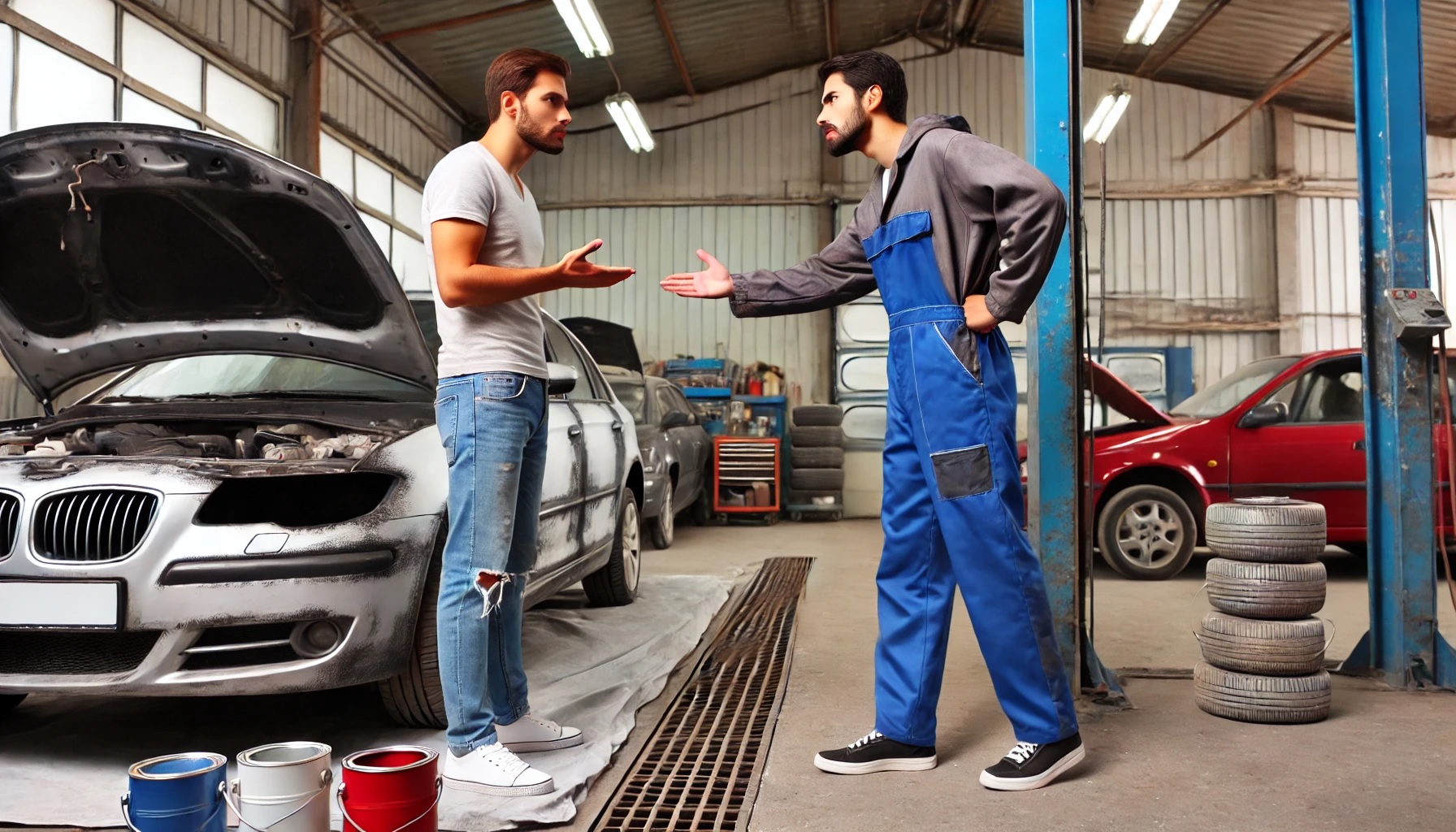To make it clear from the beginning, I will not name the best brand or model, even if I do have a very strong opinion about the best electric tools in the market. The main objective of this short post is to clarify to our readers what machine they should have in their bodyshop to solve car refinishing problems. For the last couple of years, collision repair professionals have been approached with a great variety of tools, and I have been asked quite a few times about the best choice.
Types of polishing machines
All the existing polishing machines in the market can be divided into three categories: rotary, random orbital and dual action (DA). Below I am going to explain the major differences between them.
Rotary polishers
Rotary polishers are the oldest polishing tools in the market. They use simple circular motion on a single axis. Modern rotary polishers come in a variety of designs and with the possibility of speed adjustment (usually from 600 to 2500 rpm), but the two most important parameters we check in a rotary machine is the power output and weight.
Orbital polishers
Orbital polishers unlike the rotary polishers, which are using direct drive on one axis, have two centers – machine central spindle and pad’s own axis. The movement of the pad is orbital, like the Earth’s movement around the Sun. The shape of the orbit depends on the distance between the two axes. This distance is a crucial technical parameter and usually is somewhere between 8 to 21mm. The best example (at least from marketing point of view) of random orbital technology is Rupes Big Foot series. The good thing about orbital polishers is that they are very safe, and it is almost impossible to overheat or damage the coating while using an orbital polisher.
Dual action polishers
Dual action or DA polishers are usually confused with orbital ones. DAs are actually a hybrid between rotary and orbital machine, in which forced rotary movement is combined with orbital. This machine is supposed to have the best from the two worlds. Flex XC3401 VRG is the most known DA polisher in the market. The Das indeed can do the job of minor scratches correction, on the other hands, it is very hard to remove wet sanding marks, for example.
What polisher shall we buy for a bodyshop and why?
First of all, we need to understand when usually we use a polishing machine in the collision repair shop? The main usage of polishing or buffing in a bodyshop occurs when a painter needs to remove certain paint defects revealed after the repair job is completed. The most frequent paint defects, which require buffing, are dust nibs, runs, excessive orange peel and clearcoat dieback. Usually prior to compounding, a painter use either wet or dry sanding paper to speed up the polishing process altogether. So, in other words, polisher is a kind of fire extinguisher helping to prevent the potential customer’s complaints. Nobody likes those nasty dust nibs on a freshly painted car. The key parameter for polishing is the speed. Paint defects must be removed quickly and effectively, so that the vehicle could leave the workshop on time.
From the three types of polishers I mentioned above, the fastest and the most powerful tool is a rotary buffer. Rotary machine quickly increases the temperature of the paint, softens it and by friction between pad, compound and the surface, removes the upper layer of the clearcoat. DA polisher and especially random orbital machines will fail in most of the instances to remove sand paper scratches even from grit P2000. Fact. Despite the ease of use and safety, dual action and orbital polishers are not the preferred tools for a bodyshop professional. They are very useful for the detailers to remove holograms, swirls and to apply wax or sealant, but this is another job.
Conclusion
If you need to buy a polishing machine (every bodyshop must have one), go for a reliable rotary polisher. Pay attention to the machine’s weight (something within 2-2.5kg range is a good choice) and power output (900 – 1100 Watt are good enough). However, if you consider to offer polishing and detailing services, which I strongly recommend you to do (read a separate article about this topic here), then a DA polisher or random orbital one will be a well-justified and worthwhile investment.
P.S. A car sprayer should consider purchasing a pneumatic orbital polishing machine. Unlike car detailing shops, all bodyshops are equipped with decent air compressors. Pneumatic polishers are powerful, durable, lightweight and almost maintenance free.






